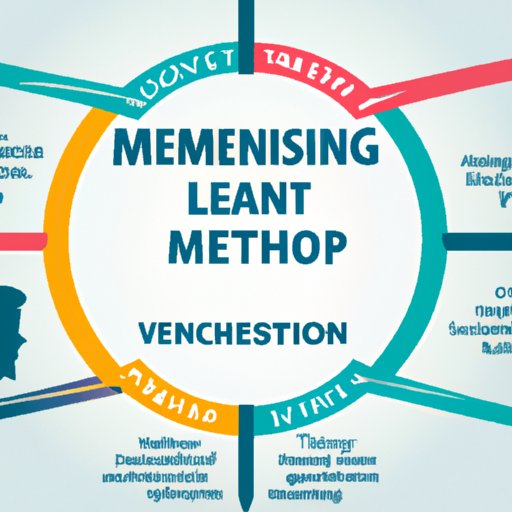Introduction
Mentorship is a relationship between two people that involves one person helping another to develop knowledge, skills, and confidence. Mentoring can be an invaluable tool for developing leadership qualities in others, as it provides guidance and support, encourages open communication, and helps to identify and build upon individual strengths and weaknesses. This article will explore how to mentor someone for leadership, from identifying strengths and weaknesses, to facilitating a mentoring environment, to providing real-world experiences and tracking progress.

Identify the Strengths and Weaknesses of the Person Being Mentored
The first step in mentoring someone for leadership is to assess their current skills and knowledge. This can be done through conversations, observations, and assessments. It is important to identify not only the person’s strengths, but also areas where they may need to improve. This can help to focus the mentoring process and ensure that the mentee is receiving the most effective guidance.
Once the strengths and weaknesses have been identified, it is important to discuss them with the mentee. This can help to foster an understanding of their capabilities and limitations and provide an opportunity to set goals and objectives for improvement.

Facilitate a Mentoring Environment That Encourages Open Communication
Creating an atmosphere of openness and trust is essential for successful mentoring. The mentee should feel comfortable sharing their thoughts and feelings without fear of judgment or criticism. This environment of mutual respect and understanding can help to strengthen the mentor-mentee relationship and encourage honest dialogue.
In addition to creating a safe space for communication, it is important to actively listen and provide feedback to the mentee. This can help to build their confidence and reinforce positive behaviors.
Provide Real-World Leadership Experiences
Providing real-world examples of successful leadership is one of the most effective ways to mentor someone for leadership. Discussing past experiences can help to illustrate what works and what doesn’t, and provide valuable insight into the challenges faced by leaders.
In addition to discussing successful leadership, it is important to give the mentee opportunities to practice. This could include giving presentations, leading meetings, or taking on other leadership roles. These experiences can help to build the mentee’s confidence and prepare them for future leadership positions.
Develop Actionable Leadership Goals
Once the mentee has identified their strengths and weaknesses, and has gained some experience in real-world leadership, it is important to set actionable goals. These should be specific, measurable, attainable, relevant, and timely (SMART). Setting SMART goals can help to keep the mentee focused and motivated and ensure that they are making progress towards their desired outcome.
It is also important to develop strategies to achieve these goals. This could include attending workshops, reading books, or engaging in online courses. These strategies should be tailored to the individual and designed to help them reach their goals in the most efficient and effective way possible.

Share Your Own Leadership Experiences
Drawing on your own experiences can be a powerful way to mentor someone for leadership. Sharing stories of successes and failures can provide valuable insights that may not be found in books or online. It can also help to build trust and demonstrate that the mentor is invested in the mentee’s development.
In addition to sharing stories, it is important to provide guidance and support. This could include offering advice, providing resources, and offering constructive feedback. These activities can help to strengthen the mentor-mentee relationship and ensure that the mentee is receiving the most effective guidance.
Track Progress and Evaluate Success
The final step in mentoring someone for leadership is to track progress and evaluate success. This can be done by measuring progress against goals, reviewing successes and failures, and providing feedback. Tracking progress can help to keep the mentee motivated and ensure that they are making progress towards their desired outcome.
Evaluating success can also provide valuable insights into the effectiveness of the mentoring process. This can help to identify areas for improvement and ensure that the mentee is receiving the most effective guidance.
Conclusion
Mentoring for leadership can be an invaluable tool for developing leadership qualities in others. From identifying strengths and weaknesses, to facilitating a mentoring environment, to providing real-world experiences and tracking progress, there are many steps involved in mentoring someone for leadership. By following these steps, mentors can equip and guide future leaders and help them to reach their fullest potential.
(Note: Is this article not meeting your expectations? Do you have knowledge or insights to share? Unlock new opportunities and expand your reach by joining our authors team. Click Registration to join us and share your expertise with our readers.)
